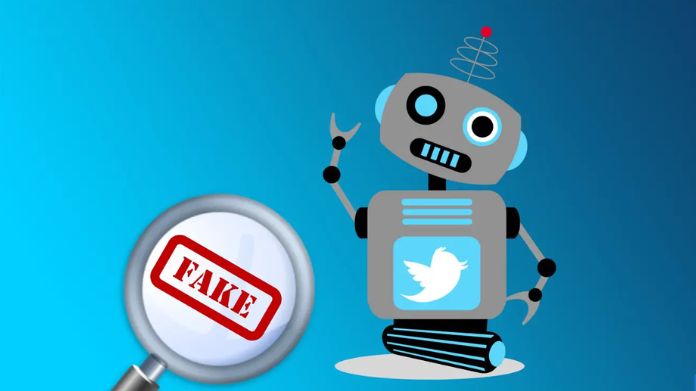Twitter is a dynamic platform where real-time conversations unfold in the vast social media landscape. However, amid the genuine interactions, a hidden realm exists of Twitter bots and fake accounts that can manipulate narratives and distort online discourse.
Identifying these artificial entities is crucial for maintaining the integrity of online conversations and safeguarding against misinformation.
In this Fake Tweet Generator guide, we embark on a journey to unveil the tactics and tools necessary to discern between authentic Twitter users and their synthetic counterparts.
Learn how to navigate the digital landscape discerningly, empowering yourself to spot and mitigate the influence of Twitter bots and fake accounts.
What Are Twitter Bots and Fake Accounts?

Twitter bots and fake accounts are artificial entities created to engage on the Twitter platform. While they serve different functions, both can have a considerable impact on the social media landscape:
1. Twitter Bots
Automated Programs: Twitter bots are automated programs that operate independently on the platform. They are designed to perform various tasks, such as posting tweets, retweeting content, liking tweets, and following/unfollowing accounts.
Amplification: Some Twitter bots are created to amplify specific messages, trends, or hashtags. They can be used to artificially inflate the popularity of content or manipulate the visibility of particular topics.
2. Fake Accounts
Impersonation: Fake accounts are typically created to impersonate real individuals or entities. They may use stolen profile pictures and information to appear genuine.
Malicious Intent: Fake accounts can be used for various purposes, including spreading misinformation, phishing scams, or conducting social engineering attacks.
Manipulation: In some cases, fake accounts are part of coordinated campaigns to manipulate public opinion, influence political discussions, or create a false consensus.
Identifying and addressing Twitter bots and fake accounts is essential for maintaining the authenticity of conversations on the platform and preventing the spread of misinformation.
Social media platforms employ various measures to detect and remove such accounts, but users also play a crucial role in staying vigilant and reporting suspicious activity.
Easy Ways to Identify Twitter Bots and Fake Accounts

Identifying Twitter bots and fake accounts can be challenging, but several indicators and strategies can help spot potential artificial entities.
Here are some easy ways to identify Twitter bots and fake accounts:
1. Incomplete Profiles
– Check for incomplete profiles with vague or minimal information.
– Be wary of profiles with missing profile pictures, bios, or location details.
2. Generic Profile Pictures
– Look out for generic or stock photos that may indicate the use of a fake profile picture.
– Reverse image search tools can help determine if the profile picture appears elsewhere online.
3. Automated Activity
– Monitor accounts that exhibit excessively automated activity, such as rapid and repetitive tweeting, retweeting, or liking.
– Consider the content of tweets; if they seem nonsensical or irrelevant, it could be a sign of automation.
4. High Follower-to-Following Ratio
– Bots often have many followers compared to the accounts they follow.
– Real users typically have a more balanced or reciprocal follower-to-following ratio.
5. Consistent Tweeting Patterns
– Bots may exhibit consistent tweeting patterns, such as posting at specific intervals or using repetitive content.
– Analyze the frequency and timing of tweets to identify unusual patterns.
6. Excessive Use of Hashtags
– Bots may use excessive hashtags in their tweets to gain visibility.
– Authentic users usually employ a more moderate and relevant use of hashtags.
7. Spelling and Grammar
– Poor spelling and grammar in tweets and profiles can indicate automated content.
– Authentic users generally maintain a reasonable standard of language.
8. Unusual Engagement
– Be cautious of accounts with unusually high levels of engagement (likes, retweets) relative to their follower count.
– Bots may artificially boost their engagement metrics.
9. Check for Duplicate Content
– Search for duplicate or similar tweets from different accounts, which could indicate automated content propagation.
10. Use Twitter Tools
– Utilize third-party tools or services designed to identify fake accounts and bots.
– Tools like Botometer, Fake Followers Audit, or Twitter Audit can analyze an account’s activity and provide insights.
While these indicators can be helpful, it’s essential to consider numerous factors and use your judgment. False positives can occur, and some legitimate accounts may display specific characteristics similar to bots.
Staying vigilant and employing a combination of these strategies will enhance your ability to identify and report suspicious accounts on Twitter.
Conclusion
In the intricate tapestry of social media, distinguishing between genuine users and artificial entities like Twitter bots and fake accounts is a crucial skill.
As we conclude our exploration, it becomes evident that vigilance, critical thinking, and the use of available tools are paramount in maintaining the authenticity of online interactions.
Twitter’s growing efforts to combat such entities are complemented by the watchful eyes of users who play a pivotal role in reporting and identifying suspicious activity.
By staying informed, employing the outlined strategies, and fostering a community commitment to transparency, we can collectively contribute to a more authentic, trustworthy, and engaging Twitter experience for users worldwide.
